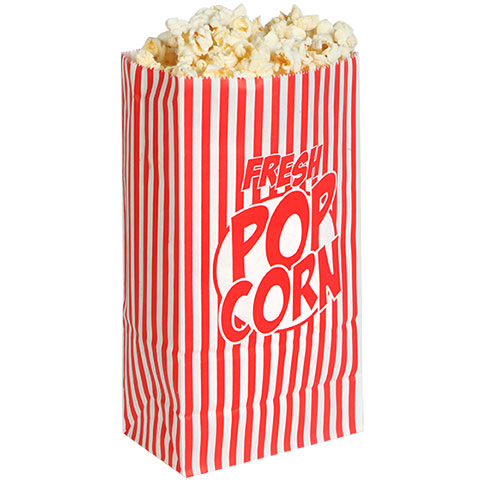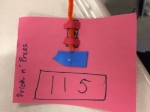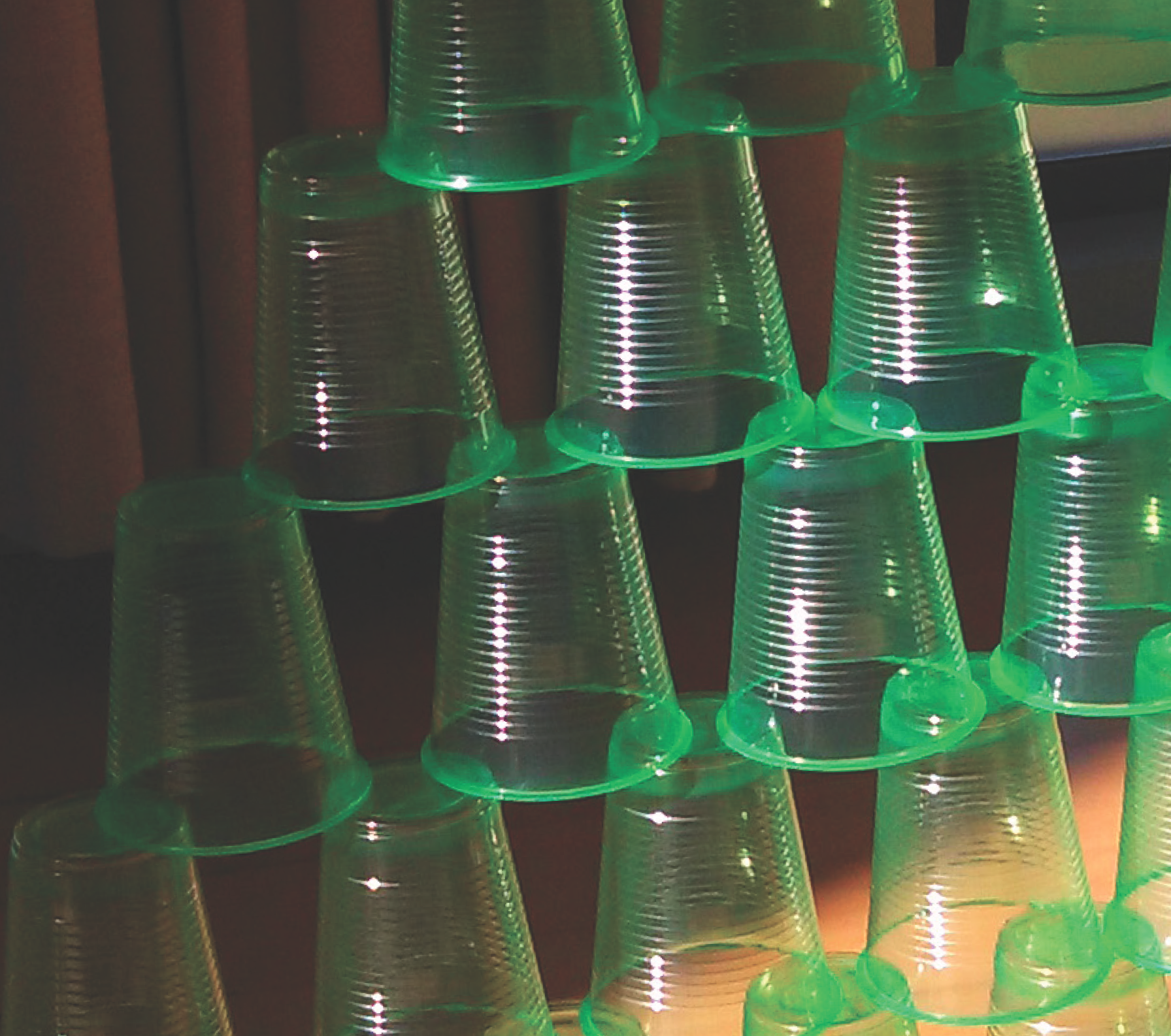Get creative and design #functionalfashion with free CAD programs
Tech in a Bag
Required materials:
household or classroom items, i.e. plastic snack bags, sticky notes, toothpaste, pair of scissors, markers, pencils, etc. within a paper lunch bag
Description:
Many students believe that technology only refers to things powered by electricity. In this lesson, each group of students gets a “mystery bag” containing an example of technology. When students open their bags, they may be surprised to see that they contain everyday objects like sponges, slippers, or bubblegum! (eie.org)
Tips:
Nothing necessarily needs to be bought for this lesson except possibly the paper bags. Many household or classroom items that you already have will work for this activity and can be reused multiple times. Items listed here have already been tested with students as a part of this lesson. My favorite items to use come from the kitchen: Cyclone by Quirky, a spork, gloves, recipe cards, etc.
1. Asking questions (for science) and defining problems (for engineering) 6. Constructing explanations (for science) and designing solutions (for engineering) 7. Engaging in argument from evidence 8. Obtaining, evaluating, and communicating information
Adaptive Design Challenge
Suggested materials:
craft materials, i.e. masking (or scotch tape), string, chenille stems (pipe cleaners), markers, toothpicks, fastener strip (Velcro), construction paper
Description:
According to TryEngineering.org, engineers have developed products that help those with physical challenges lead more comfortable and independent lives. As shown in the videos below, adaptive designs not only help those in need, adaptive designs help everyone and make life better for all!
Tips:
Many craft, household or classroom items that you already have will work for this activity and can possibly be reused. Items listed here have already been tested with students as a part of this lesson. Students should be given access to as many or as few materials as you can afford. Allow students to be creative. I've done this activity with only toothpicks, markers and construction paper!
1. Asking questions (for science) and defining problems (for engineering) 2. Developing and using models 6. Constructing explanations (for science) and designing solutions (for engineering) 8. Obtaining, evaluating, and communicating information
Paper Airplanes: Real-Life Algorithms
ESTIMATED COST:
$0.08
PER STUDENT
Required materials:
paper, scissors, glue
Code.org Description:
This lesson calls out ways we use algorithms in our daily lives, specifically making paper airplanes. This lesson also focuses on the bigger picture of computer science and how algorithms play an essential part.
NGSS alignment:
2. Developing and using models 4. Analyzing and interpreting data 5. Using mathematics and computational thinking 8. Obtaining, evaluating, and communicating information
Conditionals with Cards
ESTIMATED COST:
$0.12
PER STUDENT
Required materials:
paper, markers, glue
Hour of Code Description:
We don’t always know ahead of time what things will be like when we run our computer programs. Different users have different needs, and sometimes you will want to do something based off of one user’s need that you don’t want to do with someone else. That is where conditionals come in. This lesson demonstrates how conditionals can be used to tailor a program to specific information.
NGSS alignment:
2. Developing and using models 4. Analyzing and interpreting data 5. Using mathematics and computational thinking 8. Obtaining, evaluating, and communicating information
Graph Paper Programming
ESTIMATED COST:
$0.08
PER STUDENT
Required materials:
paper, markers, glue
Code.org Description:
This lesson calls out ways we use algorithms in our daily lives, specifically making paper airplanes. This lesson also focuses on the bigger picture of computer science and how algorithms play an essential part.
NGSS alignment:
2. Developing and using models 4. Analyzing and interpreting data 5. Using mathematics and computational thinking 8. Obtaining, evaluating, and communicating information
Electrifying STEM: Circuits and Batteries
ESTIMATED COST:
$0.07
PER STUDENT
Required materials:
"switches," wire strippers, insulated wire, flashlight, lightbulbs, batteries, electrical tape
Description:
TED-Ed calls batteries a "triumph of science." They allow electronics to operate "without anchoring us to an infernal tangle of power cables." The activities above take learners from simple circuits to an electrifying design challenge.
Tips:
Scissors may be used instead of wire strippers, but may take extra practice to strip the wire. Select a flashlight that can be easily disassembled so that the lightbulb can be removed. Also, replacing flashlights with lightbulbs may be more cost effective.
NGSS alignment:
1. Asking questions (for science) and defining problems (for engineering) 2. Developing and using models 6. Constructing explanations (for science) and designing solutions (for engineering) 8. Obtaining, evaluating, and communicating information
STEM in the Sun Lesson: Here Comes the Sun
ESTIMATED COST:
$0.15
PER STUDENT
Required materials:
used or new basic calculator, eyeglass repair kit or mini screwdriver, scotch tape
Description:
The Here Comes the Sun activity explores the concept of how solar energy is gathered by solar panels and adapted to provide power to a variety of machines, from calculators to spacecraft. Students disassemble a solar powered calculator to explore the component parts and work in teams to suggest design enhancements to the calculator to improve performance.
1. Asking questions (for science) and defining problems (for engineering) 2. Developing and using models 6. Constructing explanations (for science) and designing solutions (for engineering) 8. Obtaining, evaluating, and communicating information
Pixel Perfect Low-tech Comp Sci
ESTIMATED COST:
$0.08
PER STUDENT
Required materials:
markers and graph paper (or index cards and a ruler)
Description:
This low-tech offline lesson plan covers the basics of computer graphics. After learning about how graphics work, students will create their own Color by Pixel programs.
Tips:
If graph paper is difficult to find, create the grids on index cards with a ruler. For a high-tech extension of this lesson, click here.
NGSS alignment:
2. Developing and using models 3. Planning and carrying out investigations 4. Analyzing and interpreting data 5. Using mathematics and computational thinking 8. Obtaining, evaluating, and communicating information
Low-tech Comp Sci: Robot Friends
Required materials:
paper, markers, cups
Description:
This computer science lesson is a great low-tech introduction to coding. My Robotic Friends teaches students the connection between symbols and actions, as well as the valuable skill of debugging. Using a predefined “Robot Vocabulary,” students will figure out how to guide one another to accomplish specific tasks without discussing them first.
Tips:
The lesson plan has great adjustments for lower elementary, upper elementary and grades 7+.
NGSS alignment:
2. Developing and using models 4. Analyzing and interpreting data 5. Using mathematics and computational thinking 8. Obtaining, evaluating, and communicating information
Folding for Outer Space
Recommended materials:
aluminum foil, tape, small cardboard boxes
Description:
In this lesson, participants will explore how scientists and engineers incorporate folding and unfolding into many fascinating applications and technologies like telescopes and solar panels to study our galaxy and beyond.
Tips:
Many craft, household or classroom items that you already have will work for this activity and can possibly be reused. The recommended materials listed above have already been tested as a part of this lesson. Students should be given access to as many or as few materials as you can afford. Allow students to be creative. I've done this activity with only foil, tape and one small reused gift box! After finishing the activity, reuse the gift boxes to get the most "folds" for your money!
NGSS alignment:
1. Asking questions (for science) and defining problems (for engineering) 6. Constructing explanations (for science) and designing solutions (for engineering) 7. Engaging in argument from evidence 8. Obtaining, evaluating, and communicating informatio
Functional Fashion Challenge
ESTIMATED COST:
$0
PER STUDENT*
Required materials:
Any free CAD software i.e. Autodesk Inventor (free student version) or Morphi*
Description:
Design challenges provide opportunities to apply skills and knowledge in unique and creative ways. Designers are often asked to create or innovate products that solve complex problems, yet address aesthetic requirements to make the product as profitable as possible. As you will discover with this challenge, designers sometimes have to embody the role of engineers and artists to ensure all solutions also are aesthetically pleasing and creative enough to serve multiple purposes.
Tips*:
No materials are needed for this project except the teacher's choice of CAD software and one compatible computer per 1-2 students. Basic craft materials can be used to prototype students' physical designs or elevate the activity by 3D printing the prototypes.
1. Asking questions (for science) and defining problems (for engineering) 2. Developing and using models 6. Constructing explanations (for science) and designing solutions (for engineering) 8. Obtaining, evaluating, and communicating information
On Target Challenge
Estimated cost:
$0.10
per student
Required materials:
zip line (wire or fishing line), index card, marbles, masking tape, paper clips, paper cups, scissors, a Target (can be drawn on a piece of paper)
Description:
This activity turns a paper cup into something that can zip down a line and drop a marble onto a target. Just as the success of NASA's LCROSS (Lunar Crater Observation and Sensing Satellite) depends on hitting the crater exactly, success in this activity depends on being able to hit the target accurately and consistently. As students test their designs, encourage them to find ways to make it work better.
Tips:
A few of the items needed for this activity are reusable or can be replaced by classroom or household items you already have, saving you even more money!
2. Developing and using models 3. Planning and carrying out investigations














